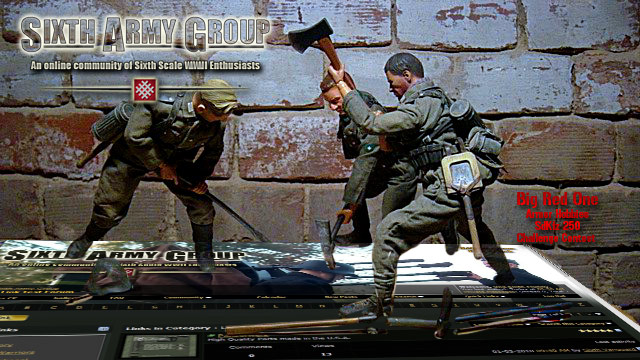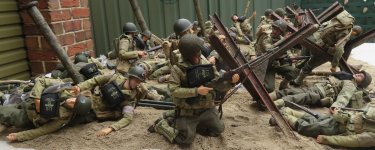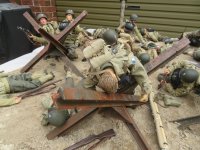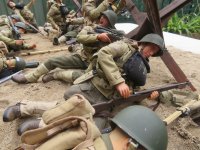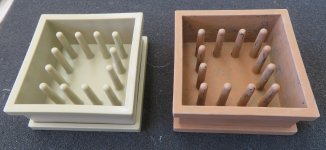SteveKrieg
Company Commander
'DOG GREEN' Sector of Omaha assault area was assigned to Company A, 1st Battalion, 116th Regimental Combat Team (RCT) of the 29th Infantry Division which consisted of six assault boat teams (ABT) of 30 men apiece plus a command boat team (company HQ). The concept of these ABTs stemmed from the intensive training in England at the Assault Training Centre and was largely driven by the fact that the standard Landing Craft Vehicle Personnel (LCVP) that would deliver them to the beaches could only hold (taking into account the wherewithal of what they carried into battle) 30 men (the average U.S. infantry platoon then consisted of 41 men).
Given the nature of the German defences to be encountered the idea was that any ABT could perform a wide-range of demolition/assault tasks with a degree of autonomy though some company and battalion commanders weren't too keen on the idea with the natural view that it broke down the cohesion of a standard platoon; which the ABTs would reform into once beyond the beaches. Such is the narrative for this the biggest scene of my D-Day dioramas this year. The calm before the storm.
Given the nature of the German defences to be encountered the idea was that any ABT could perform a wide-range of demolition/assault tasks with a degree of autonomy though some company and battalion commanders weren't too keen on the idea with the natural view that it broke down the cohesion of a standard platoon; which the ABTs would reform into once beyond the beaches. Such is the narrative for this the biggest scene of my D-Day dioramas this year. The calm before the storm.
